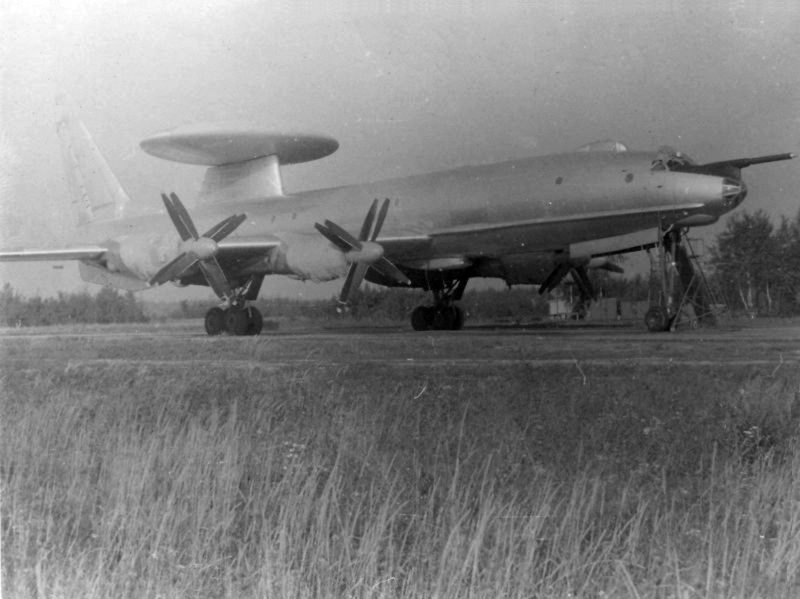H.A.
Senior Member
- Joined
- Dec 24, 2011
- Messages
- 1,445
- Likes
- 687

India got a taste of the Russian sense of humour when it made a bid to acquire the Soviet Union's version of the AWACS
In these times of acrimony and scams, it was a pleasant diversion to read that to our existing fleet of three Airborne Warning and Control System (AWACS) aircraft, which keep an eye in the sky over our borders, we will shortly add three more. Air Chief Marshal N.A.K. Browne has said that by 2025, this inventory will comprise in all five AWACS and 10 AEW&CS (Airborne Early Warning & Control System); the latter with totally indigenously designed and manufactured electronic sensors and in the event the leanest and meanest machines of its class!
So at last, after 40 long years of striving, the Indian armed forces will have arguably the most potent battlefield, force-multiplier capability conceived and manufactured post-World War II.
The AWACS had caught the fancy of the world first in the early 1970s, when the re-structured Egyptian armed forces had launched the Yom Kippur offensive against Israel and achieved complete tactical and strategic surprise. The seemingly impregnable Bar-Lev defence line along the East Bank of the Suez Canal was breached decisively, and the invincible Israelis were almost routed. This was the moment when the AWACS made its maiden combat appearance to shore up the beleaguered Israelis in the Sinai desert. And the tide of battle was thereafter so decisively reversed that but for international pressure, the Israelis were within a whisker of capturing Cairo! All the post-war analyses were unanimous that all other factors apart, the application of AWACS had contributed decisively to the ultimate outcome of that war. Little wonder then that armed forces the world over were willing to pay any price to acquire these machines. But the Americans would not part with them. The Russians were desperate to close the gap with this military technology advancement made by the Americans but it was not till the 1980s that they inducted into service their first generation AWACS.
It was natural therefore that when in 1986 General K. Sunderji visited the Soviet Union, as it was then, as a state guest, that he would request his hosts for a look at the AWACS. The idea was to either buy a few of these aircraft outright or obtain them on lease on the lines of the nuclear-powered submarine. When the subject was broached with the Russian Defence Minister during the meeting in a glittering hall at the Kremlin, the Soviets used innocence and guile to convince us that they had never heard of AWACS, let alone possess them. At this stage I slipped a sketch of the American AWACS, photocopied from the Jane's Weapon Systems, to Gen. Sunderji.
That was the beginning of a serious proposition being turned into a hilarious game of bluff. The Defence Minister said with a straight face that in the spirit of the Indo-Soviet Treaty of Friendship, would we let them have the photocopy of the technical profile of the American AWACS. After a lengthy duel of mischievous wordplay, Gen. Sunderji agreed to part with the photocopy on the assurance of the Minister that it would remain a guarded secret! And that India would have the first AWACS produced in the Soviet Union.
Our weeklong visit ended at Tashkent. The penultimate day was taken up watching displays and demonstrations of training simulators of a whole range of weapons and automotives. On the last day, we were to relax watching an exclusive performance by the Bolshoi Ballet Company followed by the Uzbek folk dancers. Before we retired to our rooms, our liaison officer, a two-star general, mentioned that he had arranged a farewell picnic-breakfast the following morning. The picnic site was the 500-hectare State Lemon Farm about 60 km from Tashkent. Try as we might, there was no fathoming the reasons for this unscheduled picnic. And on one pretext or other our host would open yet another bottle of vintage wine, prolonging the breakfast till at last there was heard the approaching drone of an aircraft.
As the aircraft made low and deliberate, repeated passes over us, our host turned to Gen. Sunderji and said, "Sir, doesn't this resemble the photocopy of the American AWACS you showed us? Had you mentioned that you wanted to see our ASDACS (Acquisition and Strike Directing Aircraft System) we would have gladly flown you in it, all the way back to New Delhi!"
Gen. Sunderji laughed, reached out to a bottle of champagne on the table and raised a toast to the Indo-Soviet Treaty of Peace, Friendship and Cooperation. But what we now have is neither AWACS nor the ASDACS but a hybrid comprising the American Phalcon radar manufactured by the Israelis and mounted by them on Russian IL-76 aircraft provided by us. Such are the games which the superpowers play with their client states.
(Baljit Singh is a retired Lieutenant General of the Indian Army.)
The Hindu : Opinion / Op-Ed : How the USSR revealed its eye in the sky to the Indian Army

